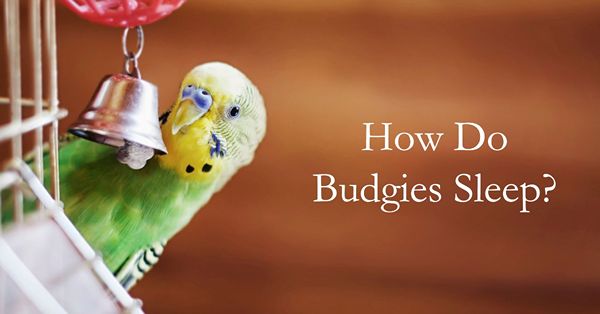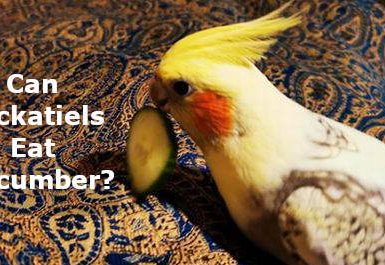
Budgies, like many other birds, have a specific program for the day. In the morning they wake up early and begin to actively perform their songs. But as soon as darkness falls, they begin preparing for sleep.
Interestingly, a wavy parrot can sleep on both his back and face. This observation was due to the fact that parrots can fall asleep in different positions.
Which Sleep Patterns Do Budgerigars Use?
Another interesting fact is that wavy parrots sleep with their partner or partners by hugging their beaks. It is a special ritual that helps them strengthen their relationship and create a stronger bond.
While sleeping, wavy parrots can make sounds that some people perceive as ticks or chants. These sounds can be made during sleep, when the parrot is dreaming and feels relaxed and safe.
In general, wavy parrots are very smart and social birds, requiring both play and activity, and both good sleep and rest.
Nighttime
Budgies are typical dreamers, sleeping most of the time. Unlike people, however, they are always asleep, dividing their time into various short bouts of sleep and activity.
In the middle of their total time of activity, Budgies begin to prepare for sleep. They become less active, tipping their heads down and hiding their heads under their wings. This can last for several minutes before they fall asleep.
During sleep, budgies are often active in their sleep. They may move their eyes, sing songs, and even shake their wings. They usually sleep on one leg and are in a balance-like posture. During the night they may awaken briefly before going to sleep again.
Typically, wavy parrots spend about 12 hours a day sleeping. Sleeping at night is an important part of their lives, helping them maintain and recover their health and prepare for new adventures in the future.
Sleep Duration for Budgerigars
Budgies need adequate sleep to stay healthy and merry. Typically, these birds sleep 10 to 12 hours a day. In some cases, they may sleep a few more hours, especially when they are in hot or cold weather.
The duration of a parrot’s sleep period depends on many factors, including age, health, and current mood. For example, a young bird may need to sleep more hours than an adult. Also, sick birds may need more time for therapy in the form of sleep and rest.
Interestingly, wavy parrots sleep in a very unusual way. Instead of falling asleep at a specific time, they may sleep early several times a day and go into a S O-call “sleep rush.” This sleep approach allows birds to recover quickly and remain active during the day.
In general, the duration of wavy parrots is an important factor in the care of these beautiful birds. You need to pay attention to their behavior and understand when they need extra rest. Maintaining proper sleep mode will help keep your birds healthy and merry.
Body Position
Budgies need to rest and sleep regularly to maintain their health and energy. During sleep, they may adopt different body positions depending on their mood and comfort.
For example, they may sit on one leg, tilt their head and wrap it around the other leg with a feather. This position helps them stay warm and uncomfortable during sleep.
They can also sleep with their head between their wings, creating a natural tilt angle and optimal position for sleep.
Some wavy parrots prefer to rest on a wall or other support. This lets them put their feet down and makes them feel safer because they can be sure that no one will approach them.
Additionally, they can simply lie down, relax, control their breathing, and enjoy the comfort and warmth.
Afternoon Sleep
Waving parrots love their daily sleep. This is due to the natural rhythm of their life. This is because they are accustomed to resting during the day when it is hotter.
Typically, budgies sleep 1 to 4 hours during the day, depending on their age and general health. To create a comfortable sleeping environment, the cage should have soft material in the perineum. That way the bird can permeate and spend time in warmth and comfort.
Because wavy parrots are very sensitive to external stimuli, it is very important that the cage be kept in a quiet area free of noise and light sources. Birds should not be disturbed during the day as this can disrupt their sleep and cause stress.
Signs of a healthy sleeping parrot:
- Loose breath
- Lack of movement
- Loose body posture
Sleep is an integral part of a parrot’s life. A properly organized daily sleeping arrangement can help maintain good health and improve quality of life.
Sleep Duration in Budgerigars
Budgies are very active birds in their natural environment. In nature, they usually sleep only at night. In captivity, however, they can sleep at any time of the day or night in domestic situations.
The duration of when a wavy cockatoo sleeps depends on his age, health, nutrition, and activity. They can sleep for about 10 hours a day and may even sleep during the day. During sleep, they sleep on one leg with their eyes closed and the other leg pressed against their body. Unlike other birds, they do not completely cover their heads to hear danger.
With proper care, nutrition, and care, wavy parrots can sleep 10 to 12 hours a day. In most cases they sleep 8 hours at night, with the remaining 2-4 hours at different times during the day. They can also rest during the day during discontinuous sleep or short naps.
Where they sleep
Parrots can choose different places to sleep. Some prefer to sleep in feeders, while others prefer to sleep on sticks or in special houses.
Usually the feeder where the bird’s food is stored will be very wide and deep so that it can be set up for the parrot to sleep. This has been proven by observations of bird owners. This sleeping method can be comfortable for the bird. This is because the bird is surrounded by soft food, which makes it feel protected and safe.
When wavy parrots sleep in wood, they can balance on their feet and possibly use their tails to keep their balance. This sleeping method can be uncomfortable for the bird if the woods are elevated and placed over long distances.
There are also special houses for horned parrots, usually installed in a cage. These designs can provide a comfortable and safe place for the bird to sleep, especially if the parrot is kept alone.
- At the feeder,
- With a stick,
- In special homes.
Semi-LACK state
Budgies are in a semi-historical state. During this time they close one eye and greatly reduce their activity. They do not sleep completely, however, but remain alert, ready to wake up immediately if danger arises.
Parrots spend most of the day in a half state. This is the time when they do not deal with active activities such as food searching or play. Fluffy parrots can remain in this state for a long time, sitting on one leg and resting.
The half-sleeping state of parrots is another example of their adaptation to their lifestyle. In the wild, they have to chase for food for a long time, which requires a lot of energy. At home, however, parrots have regular access to food and do not need to be constantly moving.
- The semi-sleep state of parrots is not full sleep, but passive rest!
- Parrots spend most of the day in a semi-sleep state
- The semi-sleep state is a form of adaptation to the Buddhist lifestyle
Sleep Periods of Budgerigars
Budgies sleep at night and may rest daily during the day. Typically, they sleep 10 to 12 hours per day, but this may vary depending on the age and health of the bird.
Often, young parrots under one year of age can sleep for more hours. Some experts recommend that young birds provide about 4 to 6 hours of rest during the day.
Adult parrots may sleep 10 to 12 hours per day, except during seasonal winter depression, when sleep may extend to 14 to 16 hours per day.
Older parrots are less likely to sleep and will sulk throughout the day. However, older birds should not remain without the opportunity to sleep well, as this can lead to a variety of health problems.
In short, the duration of sleep in wavy parrots depends on age, health, and seasonal conditions. Owners of these birds should carefully monitor their birds’ sleep to ensure that they are properly rested and sleeping.
Reasons for Use of Sleep Methods
Protection from Cold and Wind. Budgies in their natural habitat can cope with adverse conditions such as cold and strong winds. The use of sleeping methods, such as hiding the head under the wing, placing the head on one leg, or covering the eyes with the other leg, can help keep them warm and protect their eyes from the weather.
Security. In their natural environment, wavy parrots are often victims of predators. By perching on a perch, birds reduce the likelihood of detection and attack.
Optimize food intake. Wavy parrots sleep with their heads behind their heads and their bodies tired forward. This helps them slow down their metabolism and avoid running out of their fat stock when there is not much food to eat.
Social Interaction. The choice of sleep method can reflect the social hierarchy of a group of wavy parrots. Some birds may sleep in the lower branches to indicate a decrease in social status; others may sleep in the upper branches to indicate a decrease in social status; and still others may sleep in the lower branches to indicate a decrease in social status.
Question and Answer:
Question: How do budgies sleep?
Answer: budgies sleep on one leg with their eyes closed and their head placed under their wing. This is exactly the same sleeping pattern as most birds.
Question: How many hours a day do parrots sleep?
A: Parrots typically sleep 10-12 hours a day. However, this may vary with age, health, and season.
Q: Can wavy parrots sleep in the dark?
A: Yes, budgies can sleep in the dark. In fact, they prefer darkness to sleep because it is more natural to them in nature.
Question: Can parrots sleep late?
Answer: No, they cannot. Parrots need enough sleep to maintain their health and well being. Lack of sleep can lead to stress and health problems.
Question: What causes insomnia in parrots?
ANSWER: Insomnia in wavy parrots can be caused by a variety of reasons, including improper nutrition, poor daytime lighting, illness, and stress. If you notice that your parrot is not sleeping well or behaving strangely, contact your veterinarian.






Add comment